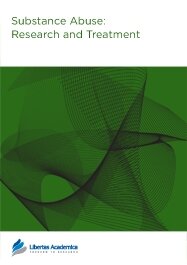

Publication Date: 21 Sep 2010
Type: Methodology
Journal: Substance Abuse: Research and Treatment
Citation: Substance Abuse: Research and Treatment 2010:4 21-33
doi: 10.4137/SART.S5025

Here we describe the first report of using low-cost cellular or web-based digital cameras to image and quantify standardized rapid immunoassay strips as a new point-of-care diagnostic and forensics tool with health applications. Quantitative ratiometric pixel density analysis (QRPDA) is an automated method requiring end-users to utilize inexpensive (∼ $1 USD/each) immunotest strips, a commonly available web or mobile phone camera or scanner, and internet or cellular service. A model is described whereby a central computer server and freely available IMAGEJ image analysis software records and analyzes the incoming image data with time-stamp and geo-tag information and performs the QRPDA using custom JAVA based macros (http://www.neurocloud.org). To demonstrate QRPDA we developed a standardized method using rapid immunotest strips directed against cocaine and its major metabolite, benzoylecgonine. Images from standardized samples were acquired using several devices, including a mobile phone camera, web cam, and scanner. We performed image analysis of three brands of commercially available dye-conjugated anti-cocaine/benzoylecgonine (COC/ BE) antibody test strips in response to three different series of cocaine concentrations ranging from 0.1 to 300 ng/ml and BE concentrations ranging from 0.003 to 0.1 ng/ml. This data was then used to create standard curves to allow quantification of COC/BE in biological samples. Across all devices, QRPDA quantification of COC and BE proved to be a sensitive, economical, and faster alternative to more costly methods, such as gas chromatography-mass spectrometry, tandem mass spectrometry, or high pressure liquid chromatography. The limit of detection was determined to be between 0.1 and 5 ng/ml. To simulate conditions in the field, QRPDA was found to be robust under a variety of image acquisition and testing conditions that varied temperature, lighting, resolution, magnification and concentrations of biological fluid in a sample. To determine the effectiveness of the QRPDA method for quantifying cocaine in biological samples, mice were injected with a sub-locomotor activating dose of cocaine (5 mg/kg; i.p.) and were found to have detectable levels of COC/BE in their urine (160.6 ng/ml) and blood plasma (8.1 ng/ml) after 15–30 minutes. By comparison rats self-administering cocaine in a 4 hour session obtained a final BE blood plasma level of 910 ng/ml with an average of 62.5 infusions. It is concluded that automated QRPDA is a low-cost, rapid and highly sensitive method for the detection of COC/BE with health, forensics, and bioinformatics application and the potential to be used with other rapid immunotest strips directed at several other targets. Thus, this report serves as a general reference and method describing the use of image analysis of lateral flow rapid test strips.
PDF (3.47 MB PDF FORMAT)
RIS citation (ENDNOTE, REFERENCE MANAGER, PROCITE, REFWORKS)
BibTex citation (BIBDESK, LATEX)
XML
PMC HTML

I very much enjoyed the experience of publishing with Substance Abuse: Research and Treatment. The editorial and review staff were very helpful and understanding throughout, even when a very large and complex project was being undertaken, and a range of subjects had to be reviewed. The editor was sympathetic and understanding of the author's responses, and this combined and coordinated interplay has allowed major conceptual advances to be made with major implications for the improvement ...

All authors are surveyed after their articles are published. Authors are asked to rate their experience in a variety of areas, and their responses help us to monitor our performance. Presented here are their responses in some key areas. No 'poor' or 'very poor' responses were received; these are represented in the 'other' category.See Our Results
Copyright © 2013 Libertas Academica Ltd (except open access articles and accompanying metadata and supplementary files.)
Facebook Google+ Twitter
Pinterest Tumblr YouTube